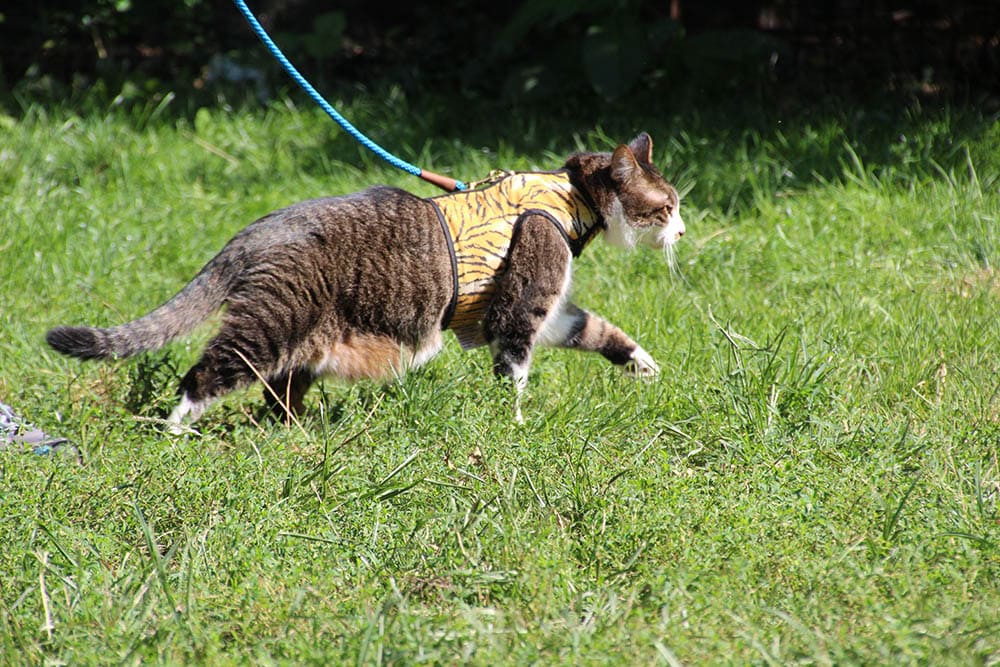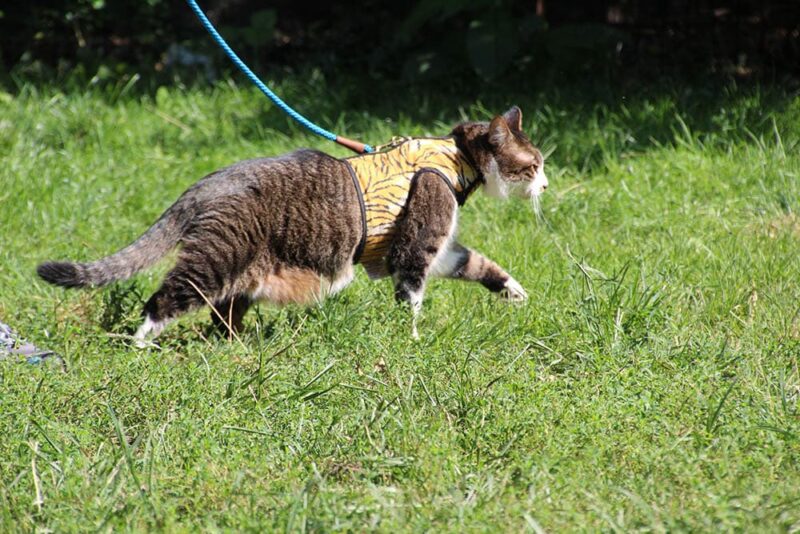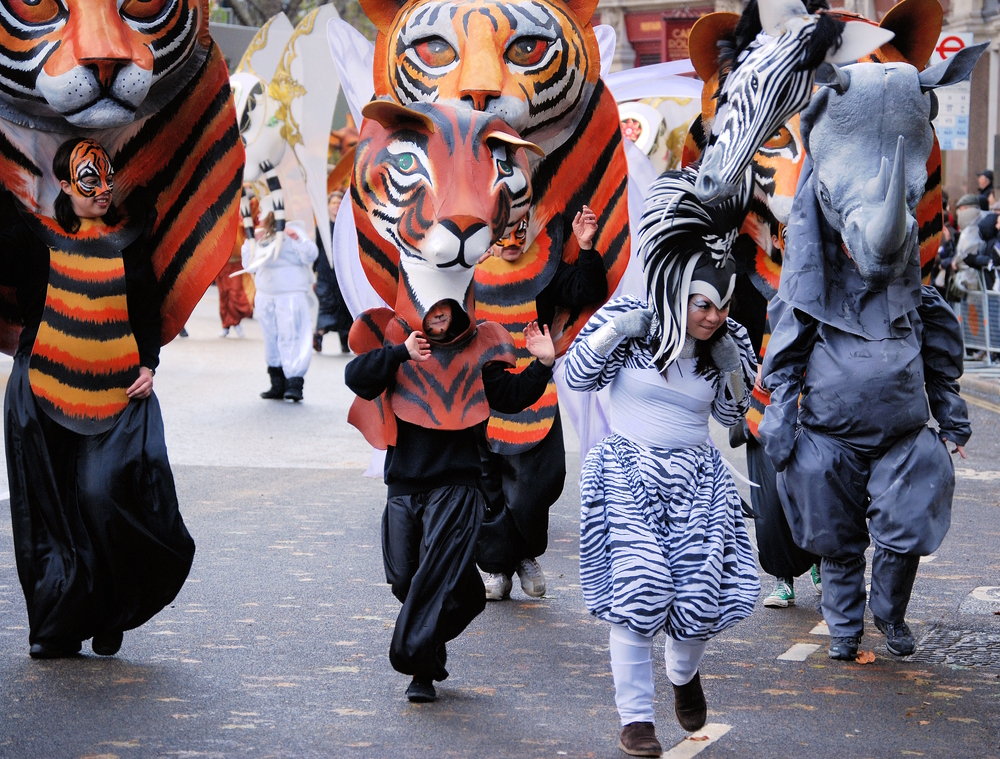While cats aren’t known to be leash walkers, many can learn to wear a harness and explore the outdoors. Going on walks with your cat is an excellent form of exercise, and it can reduce boredom for particularly active and curious cats.
Just like dogs wear different kinds of harnesses, you can find a few different styles of harnesses for cats. Each type of harness has its own set of advantages and disadvantages. We’ll go over each one to help you decide which type of cat harness is best for your cat.

How Are Cat Harnesses Classified?
Cat harnesses are typically classified into four different types:
- H-style
- Y-style
- Vest-style
- Jacket-style
You can also easily tell them apart because they have fairly distinct appearances. Each style has specific features and functions that suit different types of cats. In general, H-style and Y-style harnesses are the most common types of harnesses, and they’re good for leisurely walks and exploration. Vest-style and jacket-style harnesses are much more durable and often better suited for more active and athletic cats.
The 4 Types of Cat Harnesses
1. H-Style
- Our Choice: LupinePet Reflective H-style Cat Harness
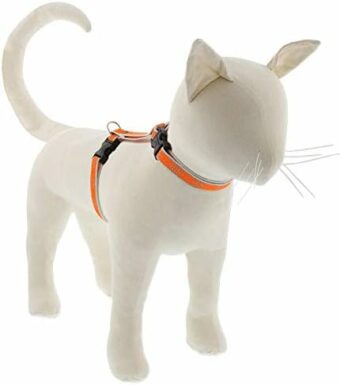
| Material: | Nylon, leather |
| Best for: | Docile cats, cats that don’t like restriction |
The H-style harness is the most common type of harness. It got its name due to its frame looking like an “H.” It usually has two loops. One loop goes over a cat’s head and rests on their neck, while the other loop wraps around the chest.
H-style harnesses are less restrictive than other types of harnesses. So, they’re usually a popular choice for cats that are starting to wear harnesses. However, smaller and leaner cats are prone to escape from them. So, it’s important to purchase the correct size.
2. Y-Style
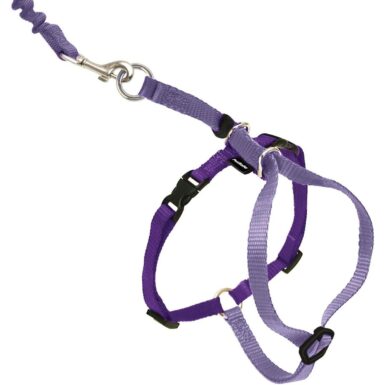
| Material: | Nylon, leather |
| Best for: | Docile cats, cats that don’t like restriction |
Y-style harnesses are also called minimalist harnesses. They look similar to H-style harnesses, but they don’t wrap around your cat’s neck. The leash connects to a loop located at the base of the shoulders, so it’s often more comfortable for cats that have a tendency to pull or leap.
Similar to H-style harnesses, the Y-style harness works well with cats that prefer less restriction. However, it’s another harness that’s also easy for nimble cats to escape from.
3. Vest-Style
- Our Choice: Hepper Cat Harness and Leash Escape Proof Set
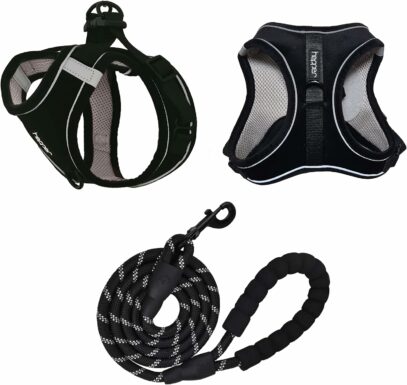
| Material: | Nylon, mesh |
| Best for: | Active cats, escape artists |
The vest-style harness has a more secure fit and is best suited for athletic cats and escape artists. It’s also usually more comfortable for cats to wear and is less likely than H-style and Y-style harnesses to cause chafing.
Since vest-style harnesses have a lot more coverage, some cats can feel restricted by them at first. So, it’s often best to get your cat used to wearing an H-style or Y-style harness before introducing your cat to a vest-style harness.
4. Jacket-Style
- Our Choice: Kitty Holster Cat Harness
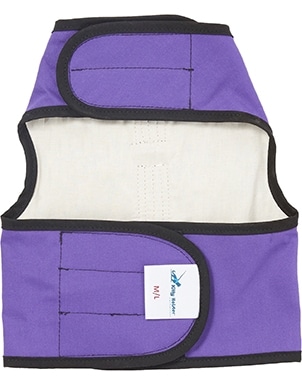
| Material: | Nylon, mesh, various materials |
| Best for: | Cats living in colder climates |
Jacket-style harnesses offer the most coverage, and they’re useful if you live in an area that has colder winters. If you don’t live in a colder climate, it’s often not necessary to use a jacket-style harness, as vest-style harnesses will usually suffice.
Jacket-style harnesses will feel the most restrictive for cats, so most cats that don’t normally enjoy wearing clothes also won’t like wearing a jacket-style harness. However, they do an excellent job of keeping your cat warm while they play outside during the colder months.
How to Measure Your Cat for a Harness
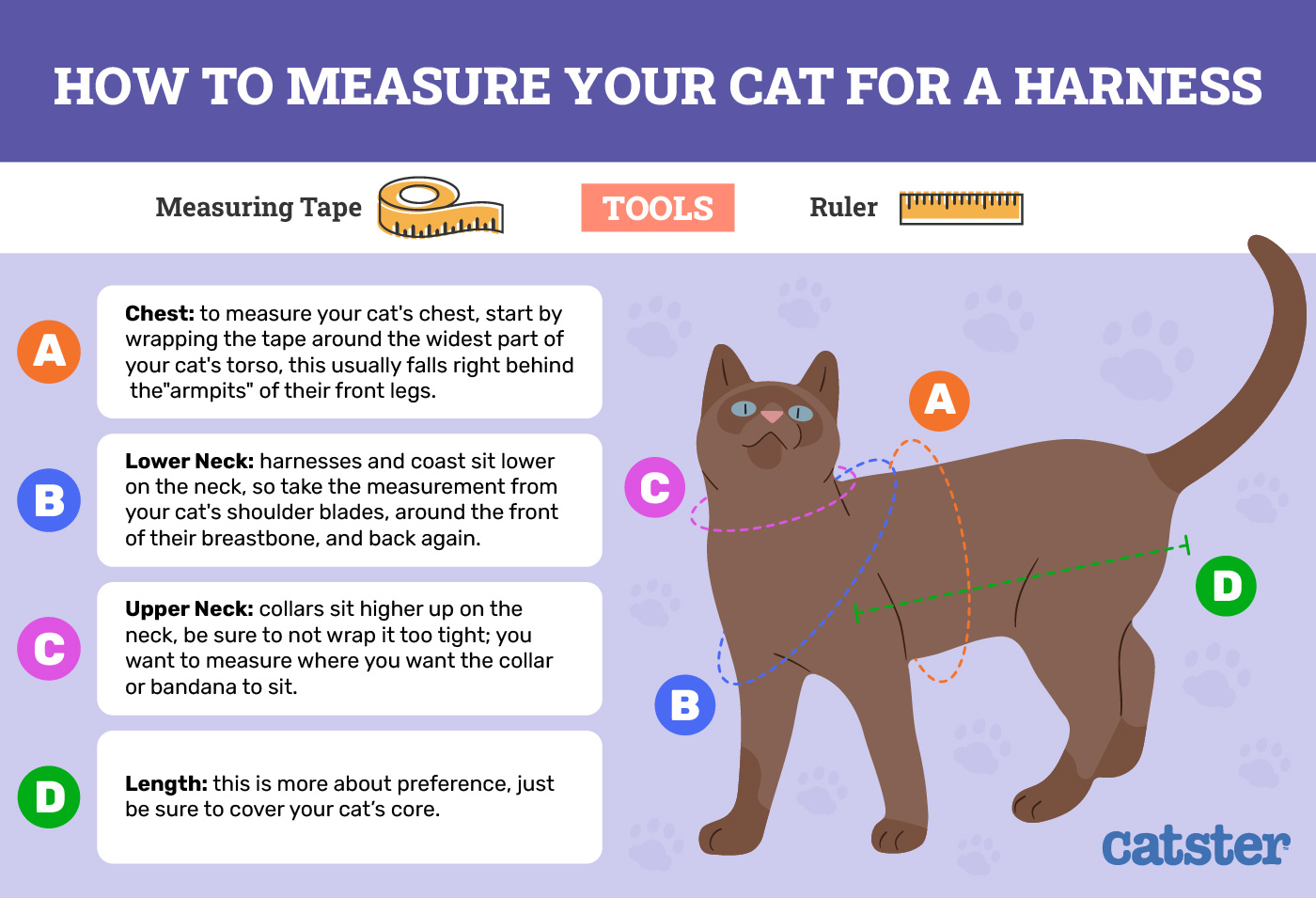
Getting proper measurements of your cat will greatly reduce the risk of injury and escaping from a harness. The measurement that must be accurately measured is your cat’s chest.
Wrap a tape measure around the widest part of your cat’s chest. If you have a long-haired cat, make sure the tape measure is wrapped securely around the chest and close to the skin.
Once you measure your cat’s chest, you can start to shop for harnesses. Most harnesses are adjustable, so look for a harness that has maximum and minimum adjustable sizes that fall just above and just below your cat’s chest measurement. This will ensure that you can change the size of the harness to be a perfect fit for your cat.

Conclusion
Cats can explore the great outdoors by wearing several different harnesses. H-style and Y-style harnesses have minimalist designs that work well with more docile cats and cats that don’t like the feeling of wearing clothes. Vest-style harnesses are better for active cats because they provide a more secure fit and reduce chafing. If you live in a colder climate, look into getting a jacket-style harness for your cat so that they can still play outdoors when it starts to get cold.
See also: Are Emotional Support Vests Necessary for Cats? Recommendations & FAQs
Featured Image Credit: Laura Sanchez Ubanell, Shutterstock

